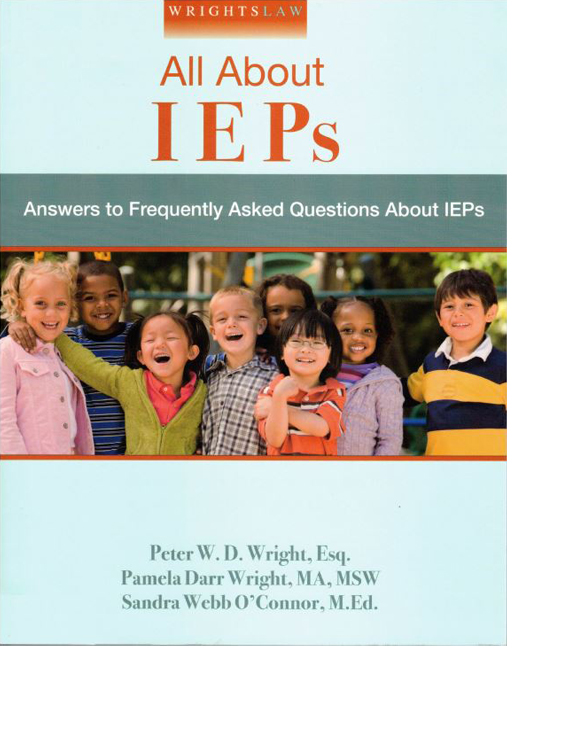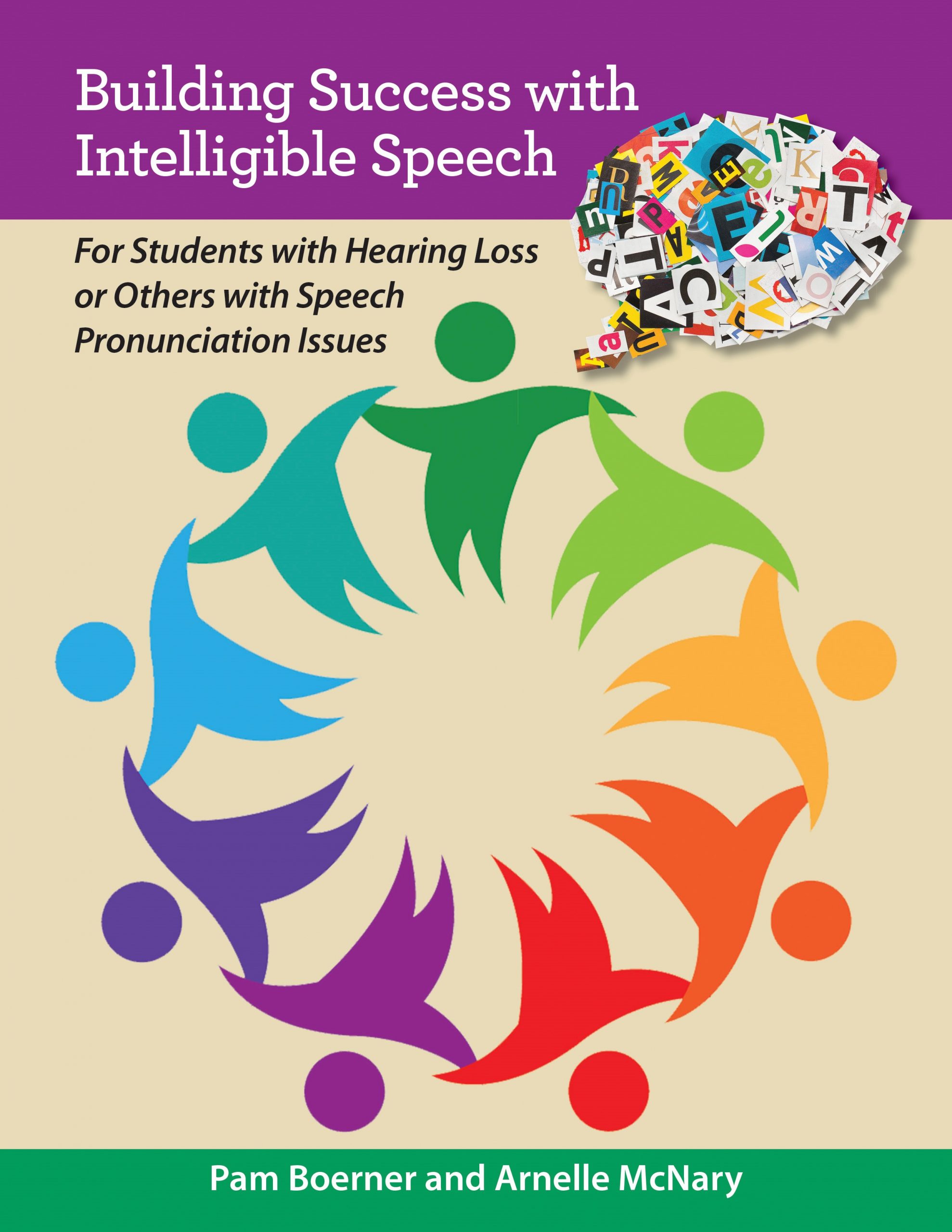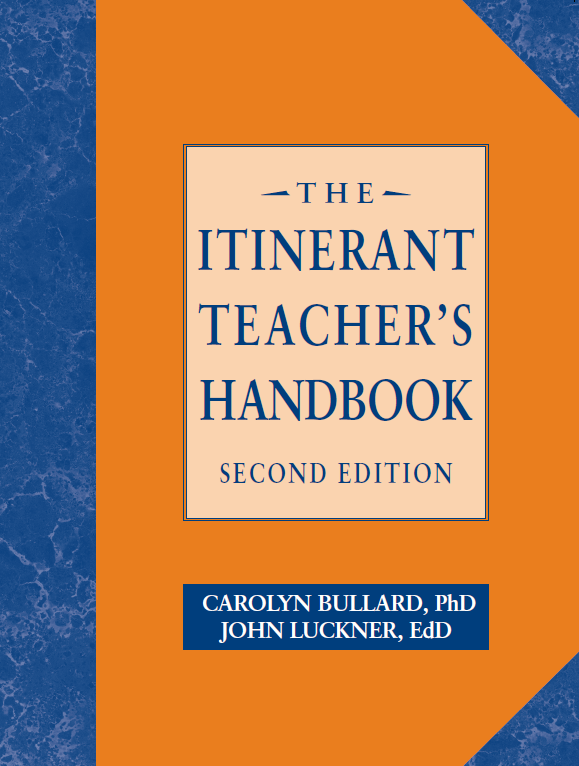Related Products
For Professionals
- Amplification
- Assessment of Student Skills, Challenges, Needs
- Early Childhood: Infants, Toddlers, Preschool
- Hearing Loss – Identification, Impact and Next Steps
- IDEA Law Summary Information
- Language and Speech Development Issues
- Legal Issues in Serving Children with Hearing Loss
- Listening (Auditory Skills) Development
- Planning to Meet Student Needs
- Self-Advocacy Skills for Students with Hearing Loss
- Self-Concept: How the Child with Hearing Loss Sees Himself
- Social Skills
- Speech Perception & Learning
Related Teacher Tools Takeout Items
Models of Service Delivery
Sometimes administrators or classroom teachers ask
- “What does the teacher of the deaf/hard of hearing do that is different from other special ed teachers?” or
- “Why do we really need to involve the teacher of the deaf? The LD teacher or SLP could handle this child’s needs.”
It can be helpful to have a summary handout of all of the ways in which a child with hearing loss is different from those with other learning issues, the areas most likely to be impacted by hearing loss and the ADA and IDEA requirements for these students.
Sometimes teachers of the deaf/hard of hearing are asked about their role in comparison to other educators. The following are resources that address role distinctions:
Student Needs CANNOT be Met by Just One Service Delivery Model
Requirement for Continuum of Alternative Placements:
Sec. 300.115 Continuum of alternative placements.

(a) Each public agency must ensure that a continuum of alternative placements is available to meet the needs of children with disabilities for special education and related services.
(b) The continuum required in paragraph (a) of this section must–
(1) Include the alternative placements listed in the definition of special education under Sec. 300.38 (instruction in regular classes, special classes, special schools, home instruction, and instruction in hospitals and institutions); and
(2) Make provision for supplementary services (such as resource room or itinerant instruction) to be provided in conjunction with regular class placement.
(Authority: 20 U.S.C. 1412(a)(5) )
Models of Service Delivery
One-size-fits-all is not a legal way to approach determination of individualized student needs.
1. Determine the student’s needs: academics AND functional performance. It is NOT necessary for a student to have an academic achievement gap as a sole criteria for adverse educational effect.
Special considerations requires the team to look at how and how well a student is able to communicate with others in the classroom setting, including the impact of the hearing loss on perception of classroom communication at a distance and in background noise.
Refer to
Support for Showing Adverse Educational Affect Due to Hearing Loss for more information.
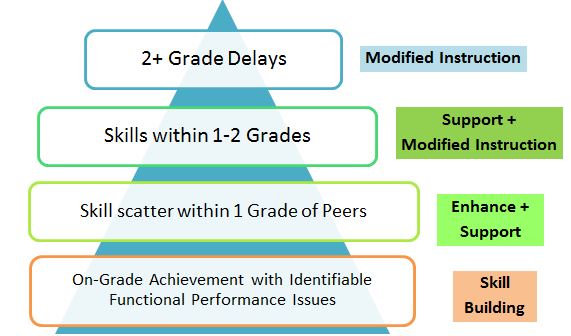 2. Does the hearing loss cause an adverse effect to education (performance in the classroom; achievement)?
2. Does the hearing loss cause an adverse effect to education (performance in the classroom; achievement)?
Does he/she have the listening, communication repair, self-advocacy skills and self-concept needed to be able to compensate for the access issues caused by the hearing loss?
If not, then challenges to functional performance in the classroom is likely. Hearing loss results in reduced incidental language learning often resulting in language gaps, including pragmatic language and social interaction issues.
3. What services (teaching skills) and supports (ensuring access) are needed for the student to receive equal benefit of education in the general education setting?
Refer to
Considerations for Service Provision Models
to further contemplate the continuum of services.
Refer to
Hearing Itinerant Services Rubric
for factors to consider when determining the level and frequency of services.
Refer to
Literature Review and Analysis or Itinerant Teachers of the Hearing Impaired Located in the Midwest: Service Delivery Model in Education (2008)
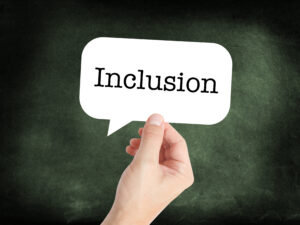 The Inclusion Model and Children with Hearing Loss
The Inclusion Model and Children with Hearing Loss
Is the Inclusion Model Good for Students with Hearing Loss?
Supporting Success Bimonthly Update article, Early October 2017
Inclusion – Answers to Frequently Asked Questions
Guidance from the US Department of Education OSERS in 1994 in response to questions from the NEA. There are 22 questions with lengthy answers. The questions most pertinent to education of students with hearing loss post-2015 are: 1, 2A, 3, 6, 7, 8A, 9C/D, 10, and 12.
Related Services: Direct vs. Consult This resource from the Texas School for the Blind and Visually Impaired defines the differences between direct and consultation services, impact on amount of service a student receives, amount of consultation to expect, monitoring consultation, and additional points to consider. The information is very applicable to students with hearing loss.

